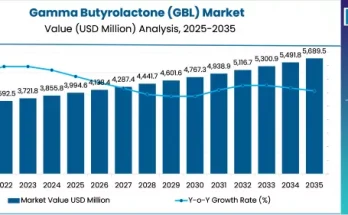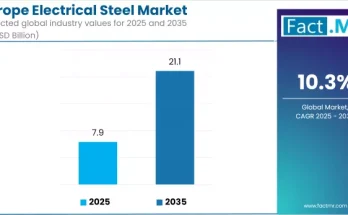The Thermoplastic Copolyester Elastomers Market is poised for a strong decade of growth, marking a major shift in flexible polymer and high-performance elastomer innovations. Valued at USD 1.0 billion in 2025, the market is projected to reach USD 1.7 billion by 2035, expanding at a CAGR of 5.5%. This steady rise highlights the growing integration of advanced elastomer technologies and performance-driven materials across key industries such as automotive manufacturing, electronics production, and medical device development.
The global thermoplastic copolyester elastomers market is gaining momentum as industries seek materials that combine flexibility of elastomers with the processability and durability of thermoplastics. These materials are increasingly chosen for applications requiring resilience, chemical resistance, thermal stability, and good mechanical performance. As manufacturers push for lightweight, durable, and recyclable solutions, thermoplastic copolyester elastomers are emerging as a go-to choice for many demanding uses.
Market Drivers & Growth Catalysts
Key drivers supporting market growth include the increasing demand in automotive for seals, gaskets, and vibration-dampening components that must withstand temperature swings and exposure to fluids or chemicals. In addition, industries such as electrical and electronics, medical devices, and consumer goods are adopting these elastomers to replace conventional rubber or less durable plastics, due to their improved fatigue resistance, dimensional stability and ease of processing via injection or extrusion. The push toward sustainability also supports these elastomers, as many formulations enable easier recycling or lower environmental footprint compared to traditional elastomers or thermosets.
Product & Application Segmentation
Thermoplastic copolyester elastomers are available in various grades suitable for injection molding, extrusion, blow molding, or other thermoplastic processing methods. Injection molding grades remain popular for complex shaped parts needing tight tolerances and consistency, while extrusion or blow molding grades serve hoses, flexible tubing, or hollow parts. Key applications include automotive (seals, hoses, ducting), industrial components (gaskets, flexible connectors), electrical/electronic housings and flexible parts, medical tubing or flexible device components, and consumer products needing elasticity with durability.
Regional Outlook & Market Opportunities
Regions with advanced manufacturing and regulatory demand lead the adoption of these materials. Developed markets like North America and Western Europe already deploy thermoplastic copolyester elastomers in automotive, medical and industrial sectors where high performance is required. Meanwhile, emerging economies in Asia-Pacific are expected to grow fastest, driven by automotive production, electronics manufacturing, and growing domestic medical device industry. Latin America, the Middle East and Africa also present potential growth as manufacturing capabilities improve and industries seek higher performance materials.
Competitive Landscape & Strategic Trends
Manufacturers of copolyester elastomers are focusing on improving formulations (enhanced temperature resistance, chemical / fluid resistance, improved fatigue life) while ensuring processability in standard thermoplastic processing equipment. Many are offering specialized grades tailored for electric vehicles, flexible fuel systems, or medical sterilization compatibility. Collaboration with OEMs ensures formulations match component requirements (e.g. dimensional stability, resistance to oils, long-term performance). Companies are also expanding local compounding or production to serve regional demand and reduce lead times / logistics costs.
Challenges & Market Restraints
Despite promising demand, there are constraints. Higher cost of advanced elastomer grades versus lower cost rubber or simple thermoplastic elastomers can limit adoption, especially in price-sensitive markets. Processing often requires specific compounding or additives to achieve required physical properties, which raises development complexity. Ensuring long-term durability under cyclic stress, high temperature or harsh chemical exposure requires rigorous testing and validation. Also, regulatory or certification requirements (particularly in medical or automotive sectors) can lengthen qualification cycles for new grades.
Forecast & Strategic Recommendations
Given the growing interest in high-performance elastomeric solutions, the thermoplastic copolyester elastomers market is set for steady expansion over the coming years. Suppliers should focus on developing versatile grades that combine elasticity, thermal / chemical resistance, and compatibility with standard injection or extrusion equipment. Expanding capacity in fast-growing regions, especially Asia-Pacific, will help capture rising demand from automotive and electronics sectors. Collaboration with end-users will speed up grade qualification and adoption. Offering value-added services such as tailored compounding, part design support, and validation for regulatory compliance will help win customers in demanding industries.
Browse Full Report: https://www.factmr.com/report/2479/thermoplastic-copolyester-elastomers-market
Editorial Perspective
Thermoplastic copolyester elastomers represent a compelling evolution of materials science: they bridge the gap between rubbers and plastics, offering elasticity with strength, processability with durability. As industries push for lighter, tougher, recyclable, and more reliable components, these elastomers are becoming a strategic material choice. The next few years will likely see them transition from niche specialty materials to mainstream components in automotive, industrial, medical and consumer applications. Suppliers that innovate in formulation, processing and regional service will be well placed to lead in this growing market space.



